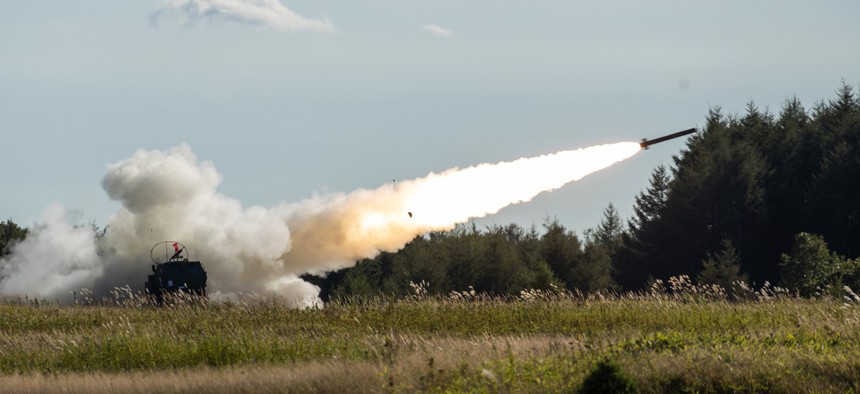
The Army’s artillery community envisions a future where artificial intelligence will scan the battlefield and tell soldiers where they need to aim the missiles. Now they just have to wait for the technology to mature.
Language learning models aren’t at the point where they can do spatial reasoning or real-time situational awareness and deliver a plan to a soldier to act on. But the Army is working on what they want that to eventually look like, said Maj. Gen. Frank Lozano, who heads Program Executive Office Missiles and Space.
“What it’s really tied to is an ability to process a large amount of data tied to multiple massed threats that we might see in the air battlespace, right?” Lozano said Monday at the AUSA annual meeting in Washington, D.C. “The enemy is never going to come at us in the way that we expect or plan for them to come at us. Right?”
An AI-based tool that maps out where the enemy is and what they’re trying to send onto the battlefield will help the Army stay one step ahead, he said.
“And so being able to prosecute targets very quickly using AI-enabled fire control, even minimal manning in some of these engagement operations centers, is going to be key for us to be able to win these future fights from an air missile defense and long-range prison fires perspective,” he said.
The hitch will be getting the human decisionmakers up to speed on what’s been happening on the battlefield when they’ve been relying on AI for ongoing surveillance.
“What I offer is, in the near-term, we continue to wait for technology to completely catch up,” said Col. Charles Kean, who commands the 1st Multi-Domain Task Force at Joint Base Lewis-McChord, Washington. “You still can have a human out in the loop, or in the loop, or however you want to look at it.”
But you won’t need as many people, Lozano said, and they won’t need to spend as much time.
“The whole basis of this is reducing the human cognitive load, reducing the manpower footprint, enabling more data processing to occur,” he said.
So Lozano put it to industry to help the Army close the gap between what they believe is possible and what currently exists.
“And it’s actually not really about maintaining pace, right?” Lozano said. “We’ve got to get ahead of the enemy in these areas, and so we’re pushing you very hard—and a lot of you are helping us get there, whether you’re using the capabilities and getting us that feedback from the forward edge, or you’re in industry helping us develop these capabilities so that we can adapt it in a much more rapid fashion.”
The post The Army wants AI to help man artillery and air defense units appeared first on Defense One.




